Effects of Intensive Pine Plantation
Management on Vegetation Communities in
the Mississippi Lower Coastal Plain
Principal Investigators
Dr. Steve Demarais
Mississippi State University Department of Wildlife and Fisheries
Dr. Andy Ezell
Mississippi State University Department of Forestry
Graduate Research Assistants
Scott L. Edwards
Mississippi State University Department of Wildlife and Fisheries (2001-2004)
Phillip D. Jones
Mississippi State University Department of Wildlife and Fisheries (2004-2008)
Tamara Campbell
Mississippi State University Department of Wildlife and Fisheries (2008-present)
Timber production in the southeastern United States is a multi-billion dollar industry, and an increasing amount of fiber production has been focused on intensively managed pine plantations. Financial considerations and concerns about future timber supplies are driving a trend toward more intensively managed pine plantations.
Expanding use of herbicide mixtures during pine stand establishment (or site preparation) to improve pine plantation productivity has generated environmental concerns among some environmental groups, private landowners, the general public, and wildlife biologists. Concerns over intensive timber management practices led to efforts to identify issues and to prioritize research efforts. Biologists representing the timber industry, private foundations, universities, and wildlife agencies throughout the Southeast discussed these issues at the "Intensive Forest Management and Wildlife Workshop" November 10, 1999. This group identified the need to quantify the response of vegetation and wildlife to herbicide mixtures and to evaluate new approaches which might minimize vegetative and wildlife impacts while allowing continued improvement in pine plantation productivity.
Quantifying relationships between pine plantation management intensity and wildlife habitat quality will facilitate land management decisions that optimize economic returns while giving consideration to wildlife values. Optimizing timber production while balancing demands for wildlife conservation and environmental integrity is a major issue to landowners and citizens in the Southeast.
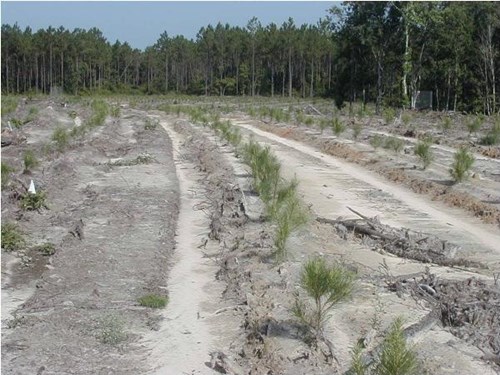
When pine plantations are established, efforts to control competing vegetation (called site preparation) are designed to give the pines a "head start" on growth. Site preparation is a valuable tool to manage timber, but complete removal of vegetation, as seen in this picture, can dramatically reduce wildlife habitat. This research project was designed to determine an operational balance between timber production and providing wildlife habitat.
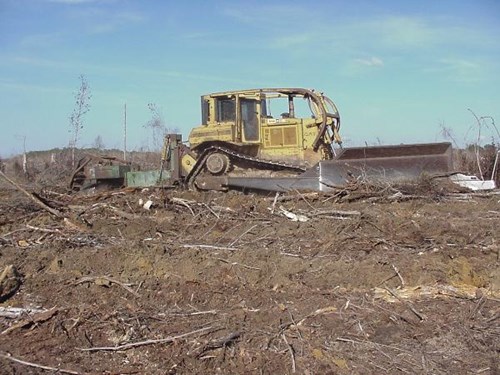
Mechanical site preparation is often conducted using a bulldozer, shear blade, and combination plow to remove logging debris and prepare the ground for planting pines.
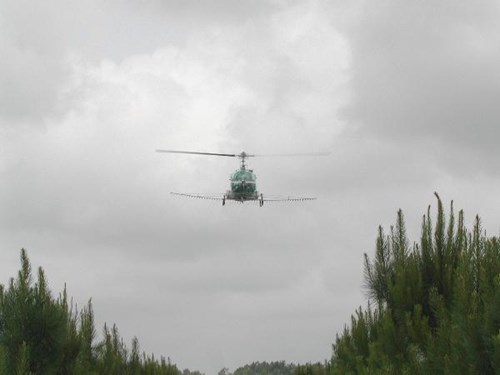
Chemical site preparation is often conducted by helicopter using herbicides to control competing vegetation. Plants typically are controlled for a few months and then grow back from seed sources.
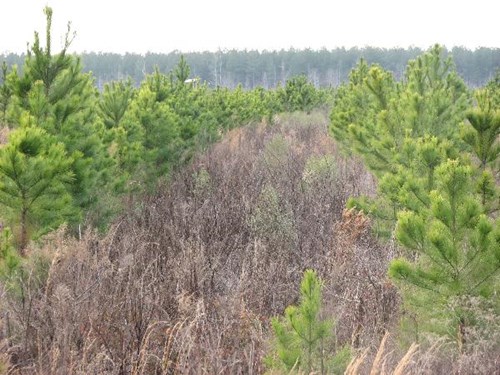
The rows between planted pines trees often provide great habitat quality: lots of high-quality plants for deer to eat and good nesting and brood-rearing habitat for upland game birds.
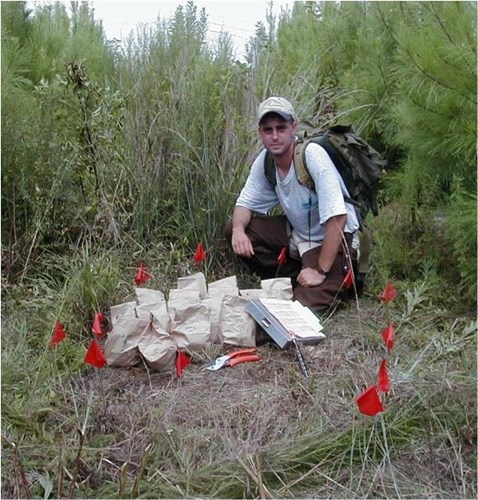
Graduate student Scott Edwards clips plants to determine how many pounds per acre of deer forage grows in pine stands established using different intensities of site preparation.
Jones, P. D., S. L. Edwards, and S. Demarais. 2009. White-tailed deer foraging habitat in intensively established loblolly pine plantations. Journal of Wildlife Management 73(4):488-496. Download
Jones, P. D., S. L. Edwards, S. Demarais, and A. W. Ezell. 2009. Vegetation community responses to different establishment regimes in loblolly pine (Pinus taeda) plantations in southern Mississippi, USA. Forest Ecology and Management 257:533-560. Download
Jones, P. D. 2008. Effects of five different intensities of stand establishment on wildlife habitat quality and tree growth in loblolly pine (Pinus taeda) plantations in southern Mississippi. Dissertation, Mississippi State University. Download
Edwards, S. L., A. Ezell, and S. Demarais. 2006. A comparison of planted loblolly pine (Pinus taeda) growth in areas receiving different levels of establishment regime intensity. Journal of Sustainable Forestry 23:1-16. Download
Edwards, S., S. Demarais, and A. Ezell. 2005. Intensively-managed pine plantations - barren wastelands or potential deer habitat? Quality Whitetails 12(5):22-28. Download
Edwards, S. L. 2004. Effects of intensive pine plantation management on wildlife habitat quality in southern Mississippi. Thesis, Mississippi State University. Download
Funding for this project was provided by:
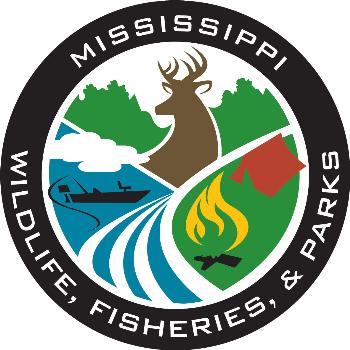 |
 |
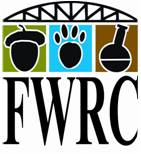 |
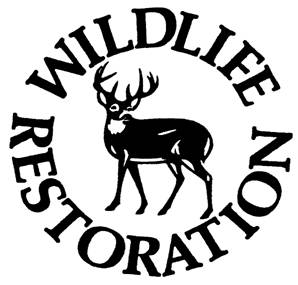 |
 |
 |
 |
 |









